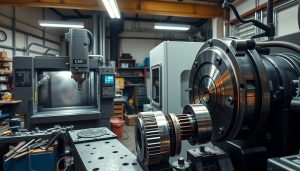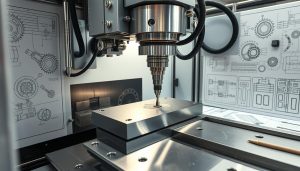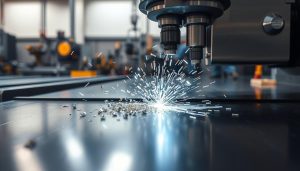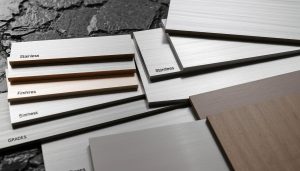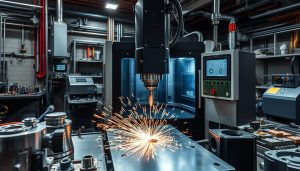In the world of manufacturing and fabrication, sheet metal welding stands as a crucial process that enables the creation of durable, high-quality products. From automotive components to industrial machinery, the art of sheet metal welding requires a deep understanding of techniques, tips, and best practices to ensure flawless results. In this comprehensive article, we will delve into the intricacies of sheet metal welding, exploring the various methods, addressing common challenges, and sharing invaluable insights to help you master this essential skill.
What is Sheet Metal Welding?
Sheet metal welding is a vital technique in the world of metal fabrication and manufacturing. It involves joining thin metal sheets, typically made of materials like steel, aluminum, or stainless steel, through the application of heat and pressure. This process not only creates strong, durable bonds but also plays a crucial role in the production of a wide range of products, from automotive parts to HVAC systems.
Definition and Overview of Sheet Metal Welding
At its core, sheet metal welding is the process of fusing two or more thin metal sheets together to form a single, continuous structure. This is achieved by melting the edges of the metal, which then solidify and bond upon cooling, creating a strong, seamless joint. The versatility of sheet metal welding makes it a preferred choice for a variety of industries, from construction and aerospace to consumer electronics and home appliances.
Common Types of Sheet Metal Welding
There are several common types of sheet metal welding, each with its own unique advantages and applications:
- Spot Welding: This method uses localized heat to create a series of individual weld spots, making it ideal for joining overlapping metal sheets in products like automobiles and kitchen appliances.
- Seam Welding: Seam welding involves a continuous weld along the length of the joint, producing a strong, airtight seal that is often used in the manufacture of water heaters, air conditioning units, and other sealed containers.
- Projection Welding: This technique utilizes small, raised areas on one of the metal sheets, called projections, to concentrate the heat and create a secure weld. It is commonly used in the production of automotive parts and electrical components.
Each of these sheet metal welding methods plays a crucial role in the metal fabrication industry, allowing manufacturers to create high-quality, durable products that meet the needs of their customers.
Common Methods for Welding Sheet Metal
When it comes to welding sheet metal, there are three primary techniques that professionals rely on: MIG welding, TIG welding, and stick welding. Each method offers unique advantages and is suited for different applications in sheet metal fabrication.
MIG Welding for Sheet Metal
MIG (Metal Inert Gas) welding is a popular choice for sheet metal projects due to its speed and ease of use. This semi-automatic process utilizes a continuously fed wire electrode and shielding gas to create strong, high-quality welds on thin metal sheets. MIG welding is particularly well-suited for general-purpose sheet metal fabrication tasks, providing good penetration and a neat, professional finish.
TIG Welding for Sheet Metal
TIG (Tungsten Inert Gas) welding, on the other hand, is a more precise and controlled technique. It involves using a non-consumable tungsten electrode and a shielding gas to produce clean, high-quality welds. TIG welding excels at welding thin sheet metal, often resulting in a smooth, uniform appearance. This makes it the preferred choice for aesthetically critical applications or when working with delicate materials.
Stick Welding for Sheet Metal
Stick welding, also known as SMAW (Shielded Metal Arc Welding), is a manual welding process that utilizes a consumable electrode coated in flux. While not as widely used for sheet metal projects as MIG or TIG welding, stick welding can be a viable option for certain applications, particularly when working with thicker gauge sheet metal or in situations where portability and versatility are crucial.
Each welding method has its strengths and weaknesses, and the choice ultimately depends on factors such as the thickness and material of the sheet metal, the desired weld quality, and the specific project requirements. By understanding the unique characteristics of MIG, TIG, and stick welding, fabricators can select the most appropriate technique to ensure successful and efficient sheet metal welding outcomes.
| Welding Method | Strengths | Weaknesses |
|---|---|---|
| MIG Welding |
|
|
| TIG Welding |
|
|
| Stick Welding |
|
|
Key Tips for Welding Thin Gauge Sheet Metal
Welding thin gauge sheet metal can be a delicate process, requiring specialized techniques and careful attention to detail. To ensure successful outcomes, it’s crucial to consider several key factors, from selecting the right electrode size to managing polarity settings.
Choosing the Right Electrode Size
When welding thin gauge sheet metal, the size of the electrode plays a crucial role. Using an electrode that is too large can lead to excessive heat input and cause burn-through, while a smaller electrode may struggle to provide enough penetration. The ideal electrode size is typically determined by the thickness of the metal being welded, with thinner materials requiring a smaller electrode diameter.
Techniques to Prevent Burn-Through
- Employ a stringer bead technique, which involves moving the welding torch in a straight line rather than a weaving motion to minimize heat input.
- Consider using a pulsed welding mode, which can help control the heat and reduce the risk of burn-through.
- Maintain a consistent travel speed to ensure even heat distribution and prevent localized hot spots.
Using Proper Polarity Settings
The polarity of the welding current can also have a significant impact on the performance and quality of thin gauge sheet metal welding. Depending on the material and welding process, using the correct polarity settings can improve weld penetration, reduce spatter, and enhance overall weld appearance.
| Welding Process | Polarity Setting |
|---|---|
| MIG Welding | Positive (+) electrode |
| TIG Welding | Negative (-) electrode |
| Stick Welding | Positive (+) electrode |
By following these tips and techniques, welders can successfully navigate the challenges of thin gauge sheet metal welding and achieve high-quality, reliable results.

Best Practices for Successful Sheet Metal Welding
When it comes to welding sheet metal, following best practices is crucial for achieving high-quality and long-lasting results. In this section, we’ll explore three key techniques that can help you master sheet metal welding: tack welding, skip welding, and controlling heat to prevent warping.
Tack Welding and Its Benefits
Tack welding is an essential step in the sheet metal welding process. By creating small, intermittent welds along the seam, tack welding helps to hold the metal pieces in place and prevent distortion during the final welding pass. This not only ensures a more precise fit but also reduces the risk of warping and other common issues associated with sheet metal fabrication.
Skip Welding for Better Results
Skip welding, or intermittent welding, is another valuable technique for sheet metal fabrication. By creating a series of short, spaced-out welds, rather than a continuous weld, skip welding helps to control heat input and minimize the risk of warping or distortion. This method is particularly useful when working with thin-gauge sheet metal, where heat management is critical to achieving the desired results.
Controlling Heat and Minimizing Warping
Effective heat control is essential for successful sheet metal welding. By carefully managing the welding parameters, such as amperage, voltage, and travel speed, you can minimize the amount of heat input and prevent warping or distortion in the final product. Additionally, using techniques like tack welding and skip welding can further help to control the heat and maintain the integrity of the sheet metal components.
By incorporating these best practices into your sheet metal welding processes, you can ensure consistent, high-quality results and minimize common issues like warping and distortion. The combination of tack welding, skip welding, and precise heat control will help you master the art of sheet metal fabrication.

Common Problems in Sheet Metal Welding
While sheet metal welding offers numerous advantages, it can also present its fair share of challenges. Two of the most common issues faced by welders are blow-through and distortion. Understanding these problems and implementing effective solutions is crucial for achieving high-quality, reliable welds.
Blow-Through Issues and Solutions
Blow-through, a common problem in sheet metal welding, occurs when the weld pool penetrates entirely through the thin metal, resulting in an undesirable hole or opening. This can be caused by factors such as excessive heat input, improper welding technique, or the use of inappropriate welding parameters. To prevent blow-through, welders should:
- Adjust the welding current and voltage to the appropriate levels for the thickness of the sheet metal
- Employ a slower travel speed to allow for more controlled heat input
- Use a smaller electrode or filler wire diameter to reduce the amount of molten metal
- Ensure proper positioning and angle of the welding torch or electrode to minimize excessive penetration
Distortion and Warping During Welding
Distortion and warping are common issues that can arise during the sheet metal welding process. These problems are often caused by the uneven distribution of heat, which can lead to uneven expansion and contraction of the metal. To mitigate distortion and warping, welders should:
- Implement tack welding techniques to anchor the workpiece and distribute heat more evenly
- Use a skip welding pattern, where welds are placed in a staggered or intermittent manner, to reduce the buildup of heat in a single area
- Employ clamping or fixturing devices to hold the sheet metal in place during the welding process
- Carefully control the welding speed and heat input to minimize the impact on the metal’s shape and dimensions
By understanding and addressing these common welding problems, such as blow-through and distortion and warping, welders can enhance the quality and consistency of their sheet metal welding projects.
“Careful attention to welding techniques and parameters is essential for producing high-quality, dimensionally accurate sheet metal parts.”
Why Choose Shixinproto for Your Sheet Metal Welding Projects?
At Shixinproto, we take pride in our exceptional sheet metal welding expertise. Our team of skilled technicians leverages advanced welding techniques to deliver precision-crafted metal components for a wide range of manufacturing needs. With a focus on quality and cost-effectiveness, we strive to provide reliable welding solutions that exceed our clients’ expectations.
Expert Welding Services for Precision Sheet Metal Parts
Shixinproto’s commitment to excellence is evident in our meticulous approach to sheet metal welding. We employ state-of-the-art equipment and employ rigorous quality control measures to ensure that every weld meets the highest industry standards. Our expert welders use their extensive knowledge and skill to create high-precision parts that meet your exacting specifications.
Reliable and Cost-Effective Welding Solutions for Your Manufacturing Needs
Businesses across various industries trust Shixinproto to handle their sheet metal welding projects. Whether you require custom fabrication, small-batch production, or large-scale manufacturing, our team has the expertise and resources to deliver reliable and cost-effective solutions that meet your timeline and budget. By partnering with Shixinproto, you can be confident in the quality and consistency of your sheet metal components.
